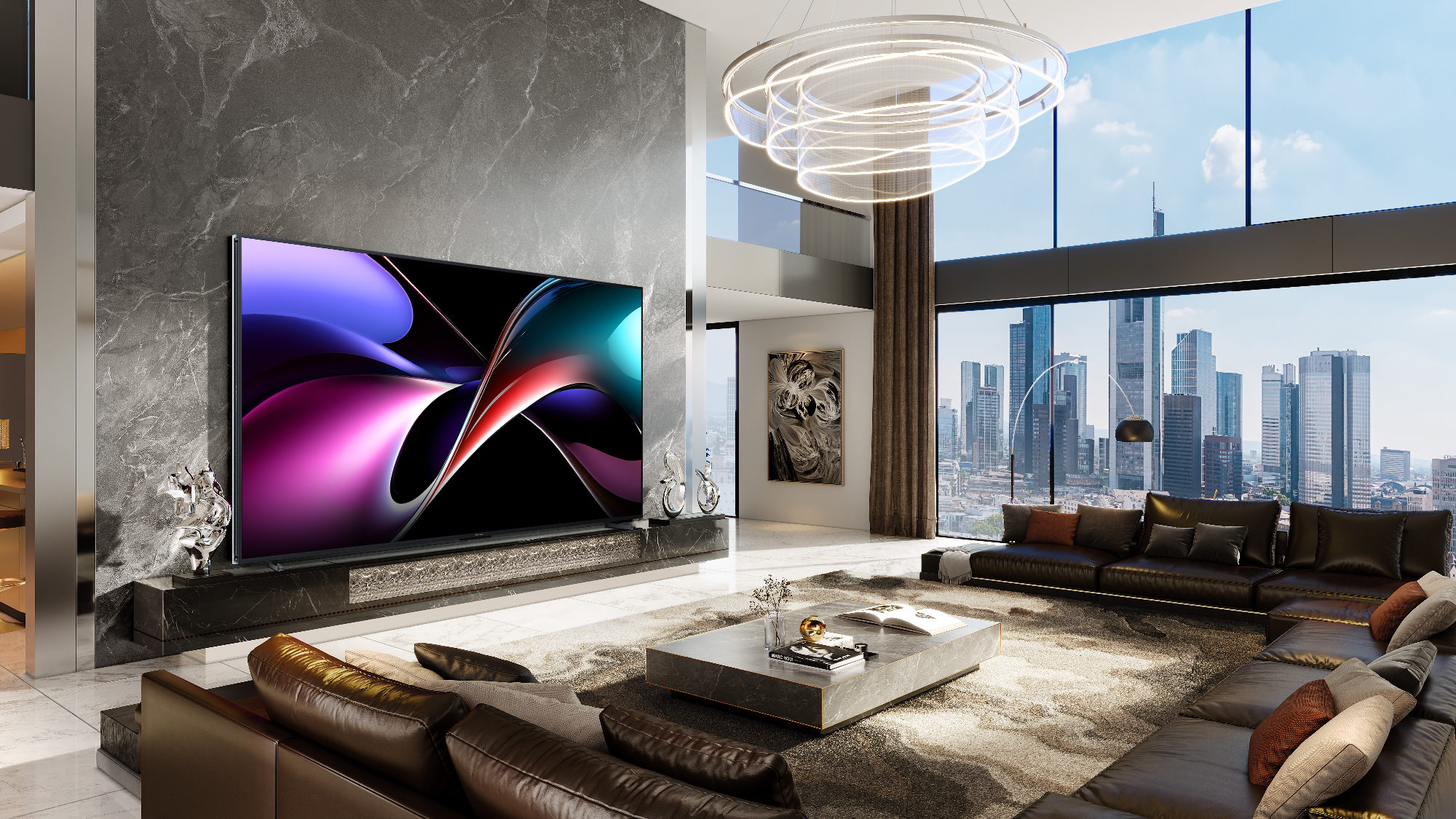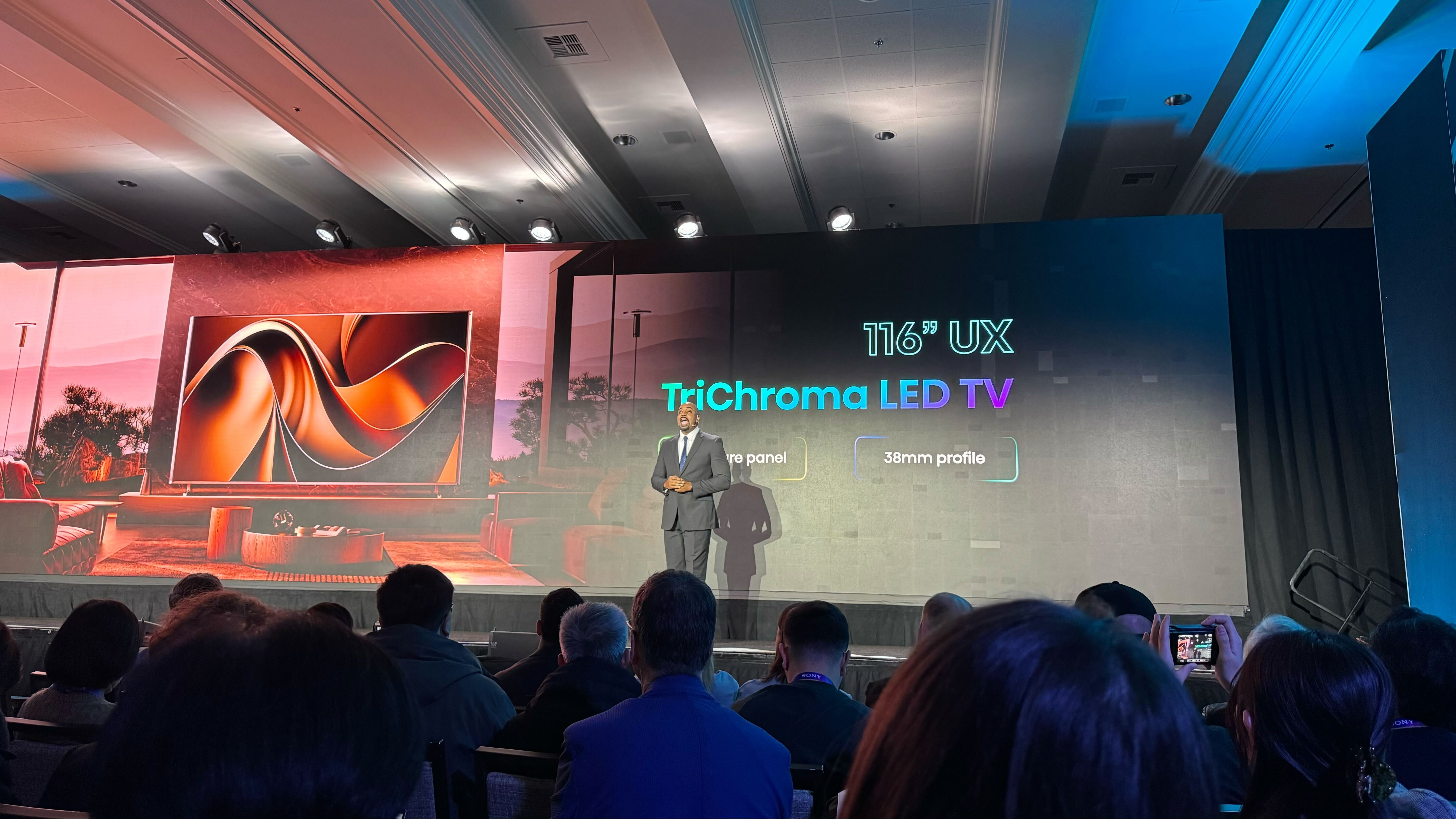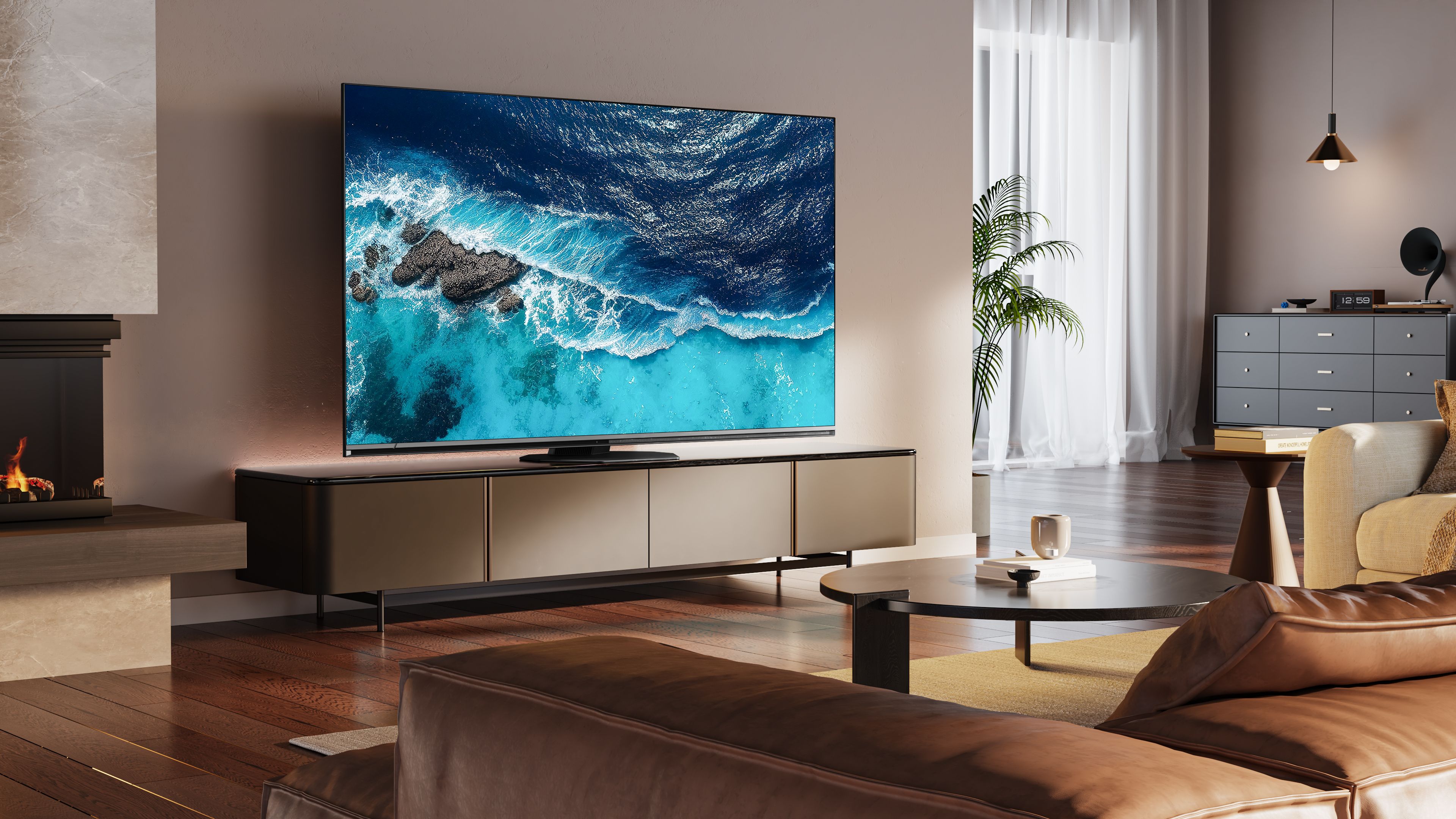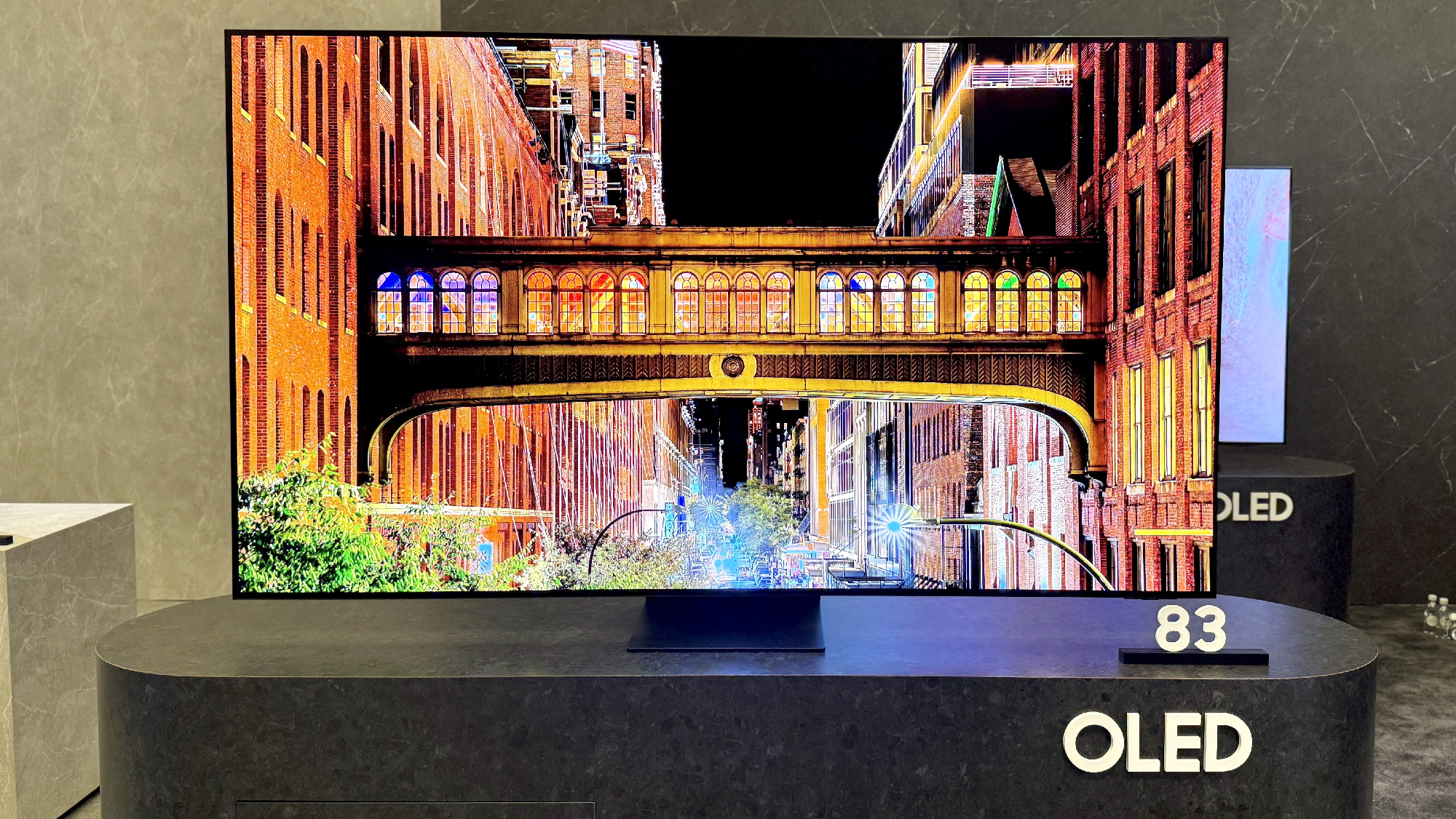Hisense’s TriChroma LED tech could transform LED TVs — here’s how it works
Brighter highlights and better color are just a few of the benefits

The humble LED TV is evolving, and quick. If you had asked me 10 years ago what the future of TV technology was, I would have said OLED, hands down. That still might be the case — but what I certainly did not anticipate was the LED putting up such a fight. So what’s next for the LED TV? Well, it could be Micro-LED, or it could be the new TriChroma LED display tech that Hisense showed off at CES 2025. Or, it could be both all at once.
First, let's clear up some confusion about terminology. TriChroma LED is essentially how Hisense is marketing its RGB local dimming technology, which itself is built on Mini-LED tech. Just because it has those three magic letters, however, doesn’t mean it’s the same thing as Panasonic’s new “Primary RGB tandem OLED” panel, which itself is very similar to the new LG four-stack OLED tech. On the contrary, the Hisense TriChroma LED tech is, for now, totally unique to the new 116-inch 116UX TV. The TriChroma Mini-LED tech is also a little different from the TriChroma “laser TV” tech that Hisense uses in its laser projectors.
So how exactly does it work, and how is it better than other display panel types out there right now? Here’s a look.
How does TriChroma LED actually work?
Before diving into TriChroma, it’s a good idea to brush up on how traditional LED TVs work.
LED TVs make use of a backlight, typically a white or blue light, that shines through various filters to produce colors. Some of the innovations in modern LED TVs are all about that backlight. For example, newer Mini-LED TVs do away with a huge single backlight (or a few dozen smaller backlights) in favor of thousands of tiny LED lights that can be dimmed or turned off completely to make for deeper black levels and more control over highlights.
Other innovations revolve around color filters. For example, many modern TVs use a layer of quantum dots to help convert the white or blue light from the backlight into colored light, while limiting how much light is lost in the process. That ultimately makes for a brighter, more vibrant image.

So what makes TriChroma LED different? Well, instead of emitting only white or blue light from the backlight, the TV makes use of thousands of “RGB Local Dimming” optical lenses, each of which contains separate red, green and blue LEDs. The lenses are controlled in clusters, rather than individually (kind of like how Mini-LED dimming zones are controlled).
Sign up to get the BEST of Tom's Guide direct to your inbox.
Get instant access to breaking news, the hottest reviews, great deals and helpful tips.
That said, local dimming can occur both at the RGB LED chip and at the optical lens. In other words, the light isn’t a single color that’s then converted — it’s the color it’s supposed to be (almost), from the beginning, through a combination of the red, green and blue LEDs.
The TV makes use of thousands of optical lenses.
To be clear, these “RGB local dimming zones” are not pixel-level, like the micro-LEDs would be in an individual pixel of a Micro-LED panel. They’re larger than that. As a result, a color filter is still used to differentiate pixels that share an RGB zone, but need to display different colors. With the ability to produce colors from the source, however, the filter will likely come into play a whole lot less.
This is purely speculation, but the fact that the light is produced by clusters of RGB backlights might be why Hisense is starting with a 116-inch panel for TriChroma LED. It’s often the case that newer display technologies take time — and money — to miniaturize. Again, that might not be the case — maybe Hisense just wanted to show off the tech with a bang on a big screen.
The pros and cons of TriChroma LED

This approach comes with some massive benefits — and in fact, it could make a TV that’s better in pretty much every single way.
For starters, being able to illuminate colors at the LED level, instead of white light that’s filtered into colors, means a much more efficient display panel. With the advent of tech like quantum dots, LED TVs have gotten better at avoiding light loss — but the fact is that even quantum dot layers still either block, absorb, or otherwise lose some light during the conversion process.
TriChroma LED tech will lose some light too, but nowhere near as much — and in fact, the 116UX that Hisense announced has a maximum brightness of a whopping 10,000 nits. For contrast, its current flagship consumer TV, the Hisense U8N, has a maximum advertised brightness of 1,800 nits (for the 55-inch model).
The tech has other advantages too. According to Hisense, the ability to adjust brightness and color independently means that the blooming common on LED TVs is largely eliminated — though we’ll have to see if that ends up being the case.
How does TriChroma LED compare to OLED and Micro-LED?
There’s still a lot we don’t know about how TriChroma LED TVs will compare with other types of display panels. That’s largely due to the fact that so far, we’re relying mostly on information from Hisense itself, and some first impressions from those (including myself) who were able to see the new TV on the show floor at CES 2025.
A trade show floor is hardly a place to conduct in-depth testing of a TV, especially given the fact that TVs are usually presented in ideal conditions, like a dark environment, a display panel that has undergone extensive quality control, and so on. In other words, we can only really talk theoretically — for now.
That said, even if the 116UX were to offer half the brightness of what Hisense claims, it would be far brighter than the average OLED panel. OLED panels have pixel-level backlight control, meaning that they can turn off the light for an individual pixel, when there’s any black in the image that’s being displayed. The result is so-called “true blacks,” or perfectly deep black levels.

But where OLED panels have typically struggled a little is in brightness. Recent models have been getting brighter, and there’s hope for much brighter panels through tech like tandem OLED.
But even the Samsung S95F, which is one of the brightest OLED TVs out there, still reaches 4,000 nits of peak HDR brightness, and only across 3% of the screen or less. To be clear, that’s pretty bright — but it’s not 10,000 nits. Again, Hisense claims much better control over backlighting with TriChroma LED, but we’ll have to see how that tracks in the real world.
Micro-LED technology still remains the holy grail for LED panels.
Micro-LED technology still remains the holy grail for LED panels though. Micro-LED panels swap larger backlights out in favor of pixel-level control, with a tiny red, green, and blue sub-pixel LED making up each pixel on the display panel. This gives the TV ultimate control — each pixel can be a separate color and brightness.
And Micro-LED panels can turn off individual pixels too, for the same true black levels that OLED TVs have. Essentially, TriChroma Mini-LED panels might be the stepping stone from previous-generation Mini-LED TVs to Micro-LED TVs that may eventually come in the future, when they’re cheaper to manufacture and the tech is a little more refined. Hisense is all in on that tech too — and at CES 2025 it launched an ultra-pricey Micro-LED TV and noted the tech as being “the future of TV.”
The future of TriChroma LED
For now, there’s only one TriChroma LED TV. Technically, actually, there isn’t even one — the Hisense 116UX has been announced and shown off at CES, but isn’t shipping, and we don’t even know how much it’ll cost yet or when it’ll be available. That said, if Hisense is able to mass-produce it while keeping costs reasonably low, it could make for the future of Mini-LED TVs, and truly serve as a go-to display tech while Micro-LED continues its development.
More from Tom's Guide
Christian de Looper is a freelance writer who has covered every facet of consumer tech, including mobile, audio, home theater, computing, gaming, and even car tech. At Tom’s Guide, Christian covers TV and home theater tech, and has reviewed dozens of TVs, soundbars, and A/V receivers, including those from the likes of Samsung, Hisense, TCL, and Vizio.

